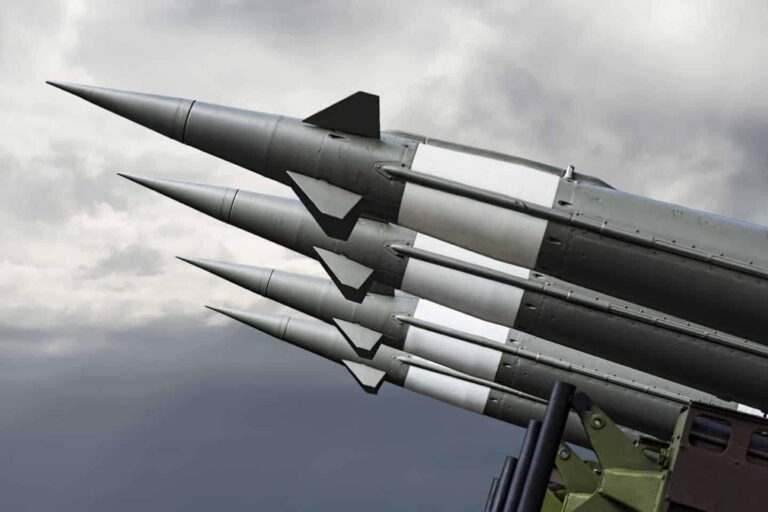The United Kingdom remains one of the world’s foremost nuclear powers, with a strategic arsenal that plays a pivotal role in its national defense policy. As global geopolitical tensions evolve, understanding the scope, capabilities, and governance of the UK’s nuclear weapons program is more crucial than ever. This article presents a comprehensive profile of the United Kingdom’s nuclear arsenal, drawing on detailed insights from the House of Commons Library. It explores the current status of the UK’s nuclear capabilities, policy framework, and the challenges faced in maintaining and modernizing its deterrent in an increasingly complex international landscape.
Overview of the United Kingdom’s Nuclear Arsenal and Strategic Doctrine
The United Kingdom maintains a sophisticated and deliberate strategic nuclear posture as part of its national defence policy. The country’s nuclear deterrent is currently underpinned by the Trident missile system, deployed on Vanguard-class submarines. These submarines provide the UK with a continuous at-sea deterrent, ensuring a credible second-strike capability that is fundamental to its security strategy. The UK government has consistently emphasised the role of nuclear weapons as a last resort and a deterrent against extreme threats, steering clear of first-use policies in its official doctrine.
Key features of the UK’s nuclear arsenal and doctrine include:
- Trident Missile System: Equipped with up to 40 warheads, the current operational system centers on sea-based ballistic missiles to maximise survivability.
- Continuous At-Sea Deterrent (CASD): One submarine is always on patrol, ensuring a persistent deterrent presence in the world’s oceans.
- Minimal Deterrence Strategy: The UK commits to maintaining the smallest number of nuclear weapons consistent with credible deterrence.
- Political Control: Nuclear weapons use remains under strict civilian government oversight, with deployment decisions reserved for the Prime Minister.
| Aspect | Detail |
|---|---|
| Number of Operational Warheads | Approximately 225 |
| Submarines in Service | 4 Vanguard-class |
| Strategic Doctrine | Deterrence and last-resort response |
| First-Use Policy | No, strictly retaliatory |
Evaluating the Impact of Modernization on National Security and Global Stability
Advancements in nuclear technology and the modernization of the United Kingdom’s arsenal have significantly reshaped the strategic calculations both domestically and internationally. Modernization efforts focus on enhancing deterrence capability, extending the operational lifecycle of warheads, and integrating cutting-edge command and control systems. While these upgrades aim to maintain a credible defensive stance, they have also sparked debate over the risks of accelerated arms races and the potential erosion of global arms control treaties. Analysts emphasize that modernization is a double-edged sword, bolstering national security while possibly inciting regional tensions.
- Improved reliability: Upgrades to warhead safety and precision reduce accidental launches or misunderstandings.
- Extended deterrence: Enhanced submarine capabilities sustain a continuous at-sea presence, crucial for second-strike assurances.
- Global response: Signals commitment to defense, but raises concerns among other nuclear-armed states over escalation.
| Aspect | Current Status | Potential Impact |
|---|---|---|
| Warhead Modernization | Ongoing | Enhances reliability and lifespan |
| Delivery Systems | Submarine-focused | Maintains second-strike capability |
| International Reactions | Mixed | May prompt regional arms build-ups |
Policy Recommendations for Enhancing Transparency and Strengthening Arms Control Commitments
To restore public trust and global confidence in the United Kingdom’s nuclear posture, the government should adopt a more open framework regarding its arsenal size, modernization plans, and deployment policies. Transparency measures such as regular, detailed reporting to Parliament and international bodies would enhance accountability and signal a commitment to responsible stewardship. Additionally, fostering dialogue with allies and adversaries alike on nuclear doctrine and capabilities could reduce misperceptions and encourage reciprocal openness, strengthening collective security architectures.
Strengthening arms control commitments demands proactive engagement in multilateral treaties and novel verification mechanisms. The UK could champion efforts to reinvigorate stalled agreements and participate in emerging frameworks that address technological advancements such as hypersonic delivery systems. Policy actions could include:
- Expanding the scope of nuclear risk reduction dialogues within NATO and with global powers.
- Enhancing compliance monitoring through improved satellite capabilities and cooperative inspections.
- Promoting disarmament initiatives consistent with the Non-Proliferation Treaty’s ambitions.
| Recommendation | Expected Impact |
|---|---|
| Regular public disclosures | Increased transparency and public trust |
| Active treaty participation | Enhanced global arms control norms |
| Verification technology advancements | Stronger compliance enforcement |
The Conclusion
In sum, the United Kingdom’s nuclear weapons programme remains a central element of its national security strategy, underscored by ongoing investments and parliamentary scrutiny. As global geopolitical dynamics evolve, the UK continues to balance deterrence with international arms control commitments. The House of Commons Library’s comprehensive analysis offers crucial insight into the complexities shaping Britain’s nuclear posture, providing policymakers and the public with a detailed understanding of one of the most consequential aspects of the nation’s defence framework.




